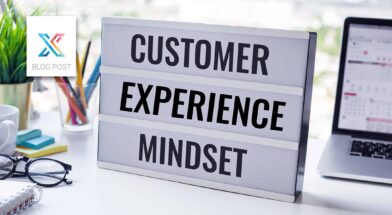Success in marketing and sales hinges on how well you understand your audience. A generic approach no longer works—customers expect businesses to recognize their unique needs and concerns. The most effective way to achieve this is by leveraging client feedback to craft messages that truly resonate.
By analyzing what your clients value, their pain points, and the language they use, you can refine your marketing and sales strategies to drive engagement, build trust, and, ultimately, increase conversions.
Why Client Feedback is Critical for Marketing and Sales
Your clients are the best source of insight into what works and what doesn’t in your messaging. Their feedback provides real-world data on what attracts attention, what drives decision-making, and what differentiates you from the competition.
When properly utilized, feedback's value extends beyond improving customer satisfaction. It becomes a strategic asset that enhances brand positioning, improves lead generation, and refines sales pitches.
By integrating customer feedback into your marketing and sales efforts, you ensure that your messaging speaks directly to the needs of your audience rather than relying on assumptions.
Shaping Marketing Messages Based on Client Feedback
Your marketing messages should reflect what matters most to your clients. Customer feedback software enables businesses to gather and analyze responses efficiently, revealing valuable insights into customer perceptions.
1. Understanding Your Clients’ Needs and Pain Points
Start by reviewing feedback collected through surveys, support interactions, testimonials, and online reviews. Identify common themes in:
- Challenges your clients face
- Features or benefits they find most valuable
- Reasons they chose your company over competitors
For example, if feedback reveals that your clients struggle with project delays, highlighting your ability to meet deadlines should be a core part of your messaging.
2. Aligning Messaging with Client Priorities
Once you’ve identified your audience's key concerns and priorities, adjust your marketing language accordingly.
- If reliability is a top concern, emphasize guarantees, case studies, and proof of consistent performance.
- If cost-effectiveness is a priority, highlight ROI, cost savings, and efficiency.
- If innovation matters, showcase how your product or service leads the industry in cutting-edge solutions.
3. Speaking in Your Client’s Language
One of the most overlooked aspects of marketing is the tone and terminology used in messaging. Client feedback provides a direct look at the words and phrases that resonate most with your audience.
A construction firm analyzing client feedback found that “schedule certainty” was frequently mentioned. However, their marketing materials never used this phrase. By incorporating this language into their website and sales materials, they instantly clarified their value proposition to potential customers.
4. Showcasing Strengths That Clients Recognize
One large professional services firm discovered that its clients highly valued its ability to manage complex project schedules. However, the firm's website and marketing content did not highlight this strength.
By incorporating client testimonials, case studies, and messaging showcasing this competitive advantage, they could differentiate themselves more effectively in the market.
Key Takeaway: If your clients recognize a strength that sets you apart, ensure your marketing materials reflect it.
Using Client Feedback to Target Ideal Clients
Beyond refining messaging, customer feedback can help businesses better identify and attract their ideal clients.
1. Identifying Patterns Among Satisfied Clients
Analyze feedback from your most satisfied and profitable clients. Look for patterns in:
- Industry type
- Company size
- Common challenges they faced before working with you
- Key reasons they continue to do business with you
This information allows you to build detailed buyer personas, which help refine your targeting efforts.
For example, if feedback shows that mid-sized healthcare organizations benefit the most from your service, you can shift your marketing efforts to focus on that specific segment rather than a broader, less effective approach.
2. Refining Lead Generation and Advertising Strategies
Knowing what your best clients appreciate about your offerings helps optimize lead-generation strategies.
- SEO and Content Marketing: To attract the right audience, incorporate frequently mentioned client concerns and solutions into blog posts, landing pages, and FAQs.
- Social Media and Ads: Use customer feedback insights to create more compelling ad copy that addresses client pain points.
- Sales Enablement: Provide your sales team with real-world client success stories to reinforce the value of your solution.
3. Tailoring Sales Pitches to Match Client Priorities
Sales teams that leverage customer feedback software gain access to data-driven insights that help refine their pitches. Instead of focusing on features, they can emphasize how those features address common client concerns.
For example, if a significant number of clients report that your software improved their workflow efficiency, your sales team should highlight specific use cases where measurable efficiency gains were achieved.
Closing the Feedback Loop: The Final Step in Refining Your Strategy
Listening to client feedback is just the first step. The final—and most crucial—step is closing the loop by implementing changes and communicating these improvements to your audience.
How to Close the Feedback Loop
- Implement Changes Based on Feedback
- Update website copy, marketing materials, and sales scripts to reflect customer priorities.
- Develop content and case studies that address common client pain points.
- Communicate Changes to Your Audience
- Announce improvements through blog posts, newsletters, or social media.
- Share testimonials from clients who have benefited from changes inspired by feedback.
- Continue Gathering Feedback
- Use customer feedback software to track ongoing satisfaction levels.
- Regularly ask clients how messaging, support, or product offerings could be further refined.
Example in Action
A SaaS company received feedback that new users found onboarding complicated. In response, they created an interactive onboarding guide and updated their website to highlight improved ease of use. They then informed clients about the changes, reinforcing their commitment to customer success.
The result? A 30% reduction in onboarding-related support tickets and an increase in new user engagement.
Conclusion
Client feedback is a goldmine for improving marketing and sales strategies. Businesses can drive stronger engagement and increase conversions by aligning messaging with customer concerns, using real-world insights to refine targeting, and continuously evolving based on feedback.
Utilizing customer feedback software streamlines this process, allowing for real-time insights that keep marketing and sales strategies agile and client-focused.
The value of feedback extends beyond improving client satisfaction—it shapes the way businesses attract, convert, and retain clients.
🔹 Ready to leverage client feedback to transform your marketing and sales strategy? Start listening, refining, and winning more clients today. 🚀
To revisit the powerful concepts outlined in our Value Creation blog series, dive deeper by reading our eBook, Nine Ways to Create Value with Feedback.





